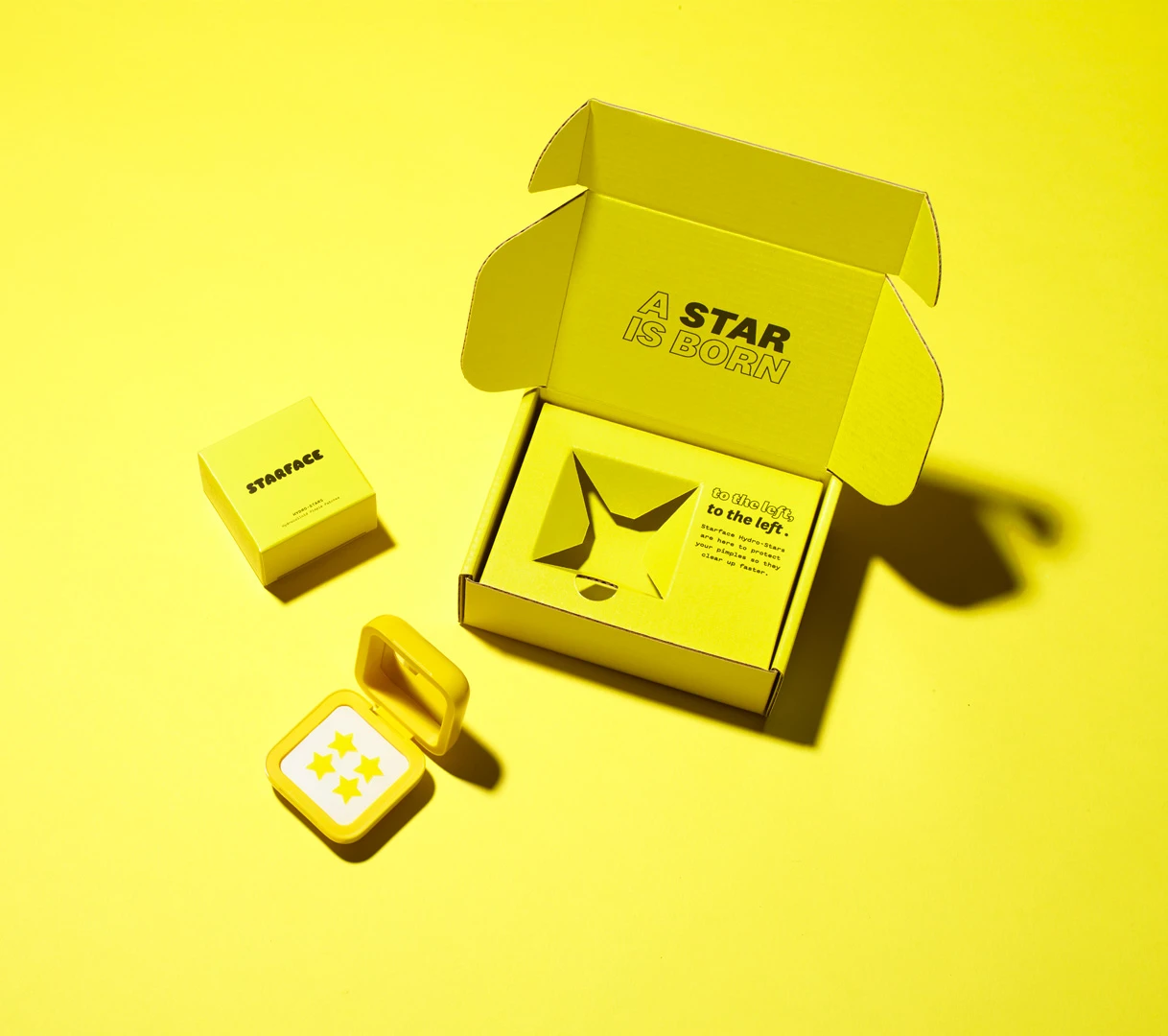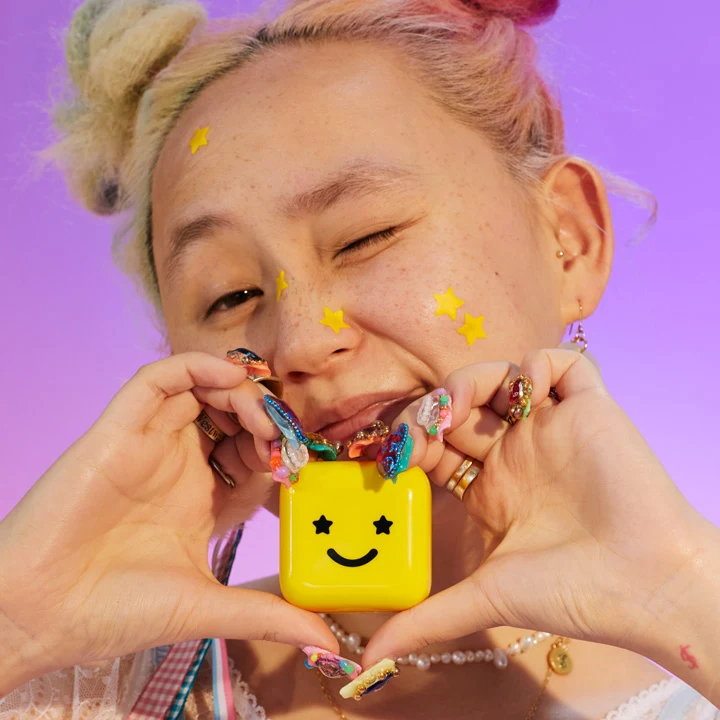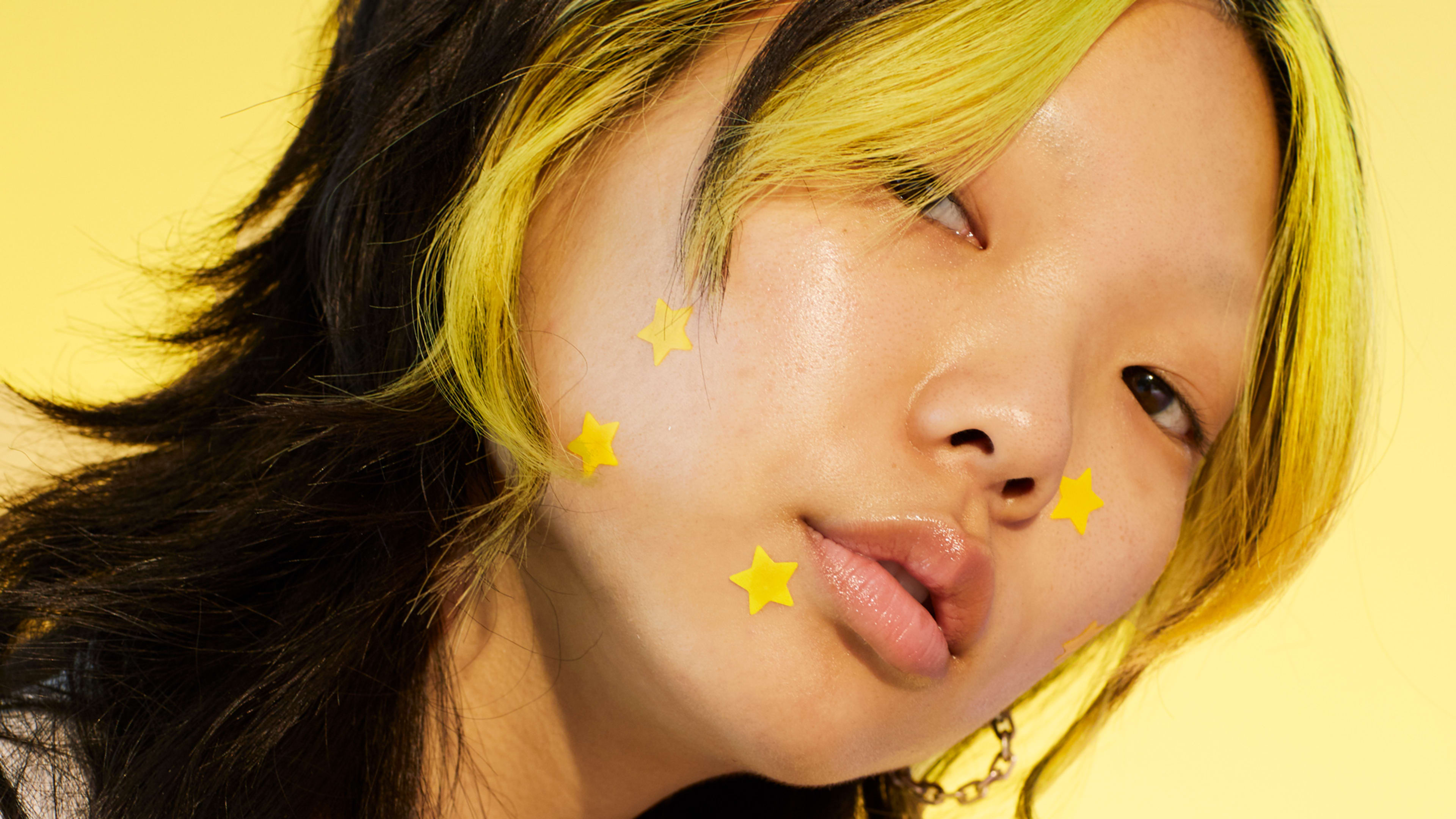Remember the horrors of a high school acne breakout? Me neither. I’ve effectively blocked those days from my memory.
But stay with me for a brief moment while we revisit that experience. Part of the anxiety of dealing with zits was worrying about the fact that other friends (and let’s be honest: our crushes) could see them. So we would spend time and energy on medication and concealers to make these blemishes less noticeable. Here’s the thing though: the vast majority of our peers were in the same boat. Acne afflicts 85% of people aged 12 and 24. (And it doesn’t stop there! 95% of adults will experience acne at some point in their lives.)

A new startup called Starface wants us to radically rethink our relationship with acne. Rather than spending all our energy hiding it, the brand invites us to decorate our faces with little yellow stars that cover our zits, helping to clear them while simultaneously drawing attention to them. Starface is a direct-to-consumer brand that sells a single product on its website: a yellow box of 32 star-shaped face stickers, which the brand calls Hydro-Stars, that cost $22. (Refills cost $18.)

Dermatologists say that the key to treating zits is to protect them from outside bacteria. Popping them tends to push bacteria back below the surface, causing further problems down the line, along with other problems, like scarring. Hydro-Stars are made from hydrocolloid, a substance used in surgical dressings that has been proven to accelerate zit healing. By planting a Hydro-Star on a pimple, the company says it effectively draws out pus while forcing you to resist the temptation to pick at them. The patches are meant to be left on for at least six hours for them to work effectively and can be removed when they turn opaque.

Starface is the brainchild of Julie Schott, the former beauty director of Elle.com, and Brian Bordainick, a serial entrepreneur. Neither of these founders is a medical expert but, then again, this product doesn’t stand out because it is a particularly cutting-edge solution to acne. There are plenty of other pimple patches on the market that work in much the same way. What stands out about Starface is how it encourages customers to stop worrying about whether other people can see their zits.

But rebranding the zit is an intriguing idea: after all, since acne is such a universal experience, why hide it? Why not decorate it?
Recognize your brand's excellence by applying to this year's Brands That Matters Awards before the early-rate deadline, May 3.
